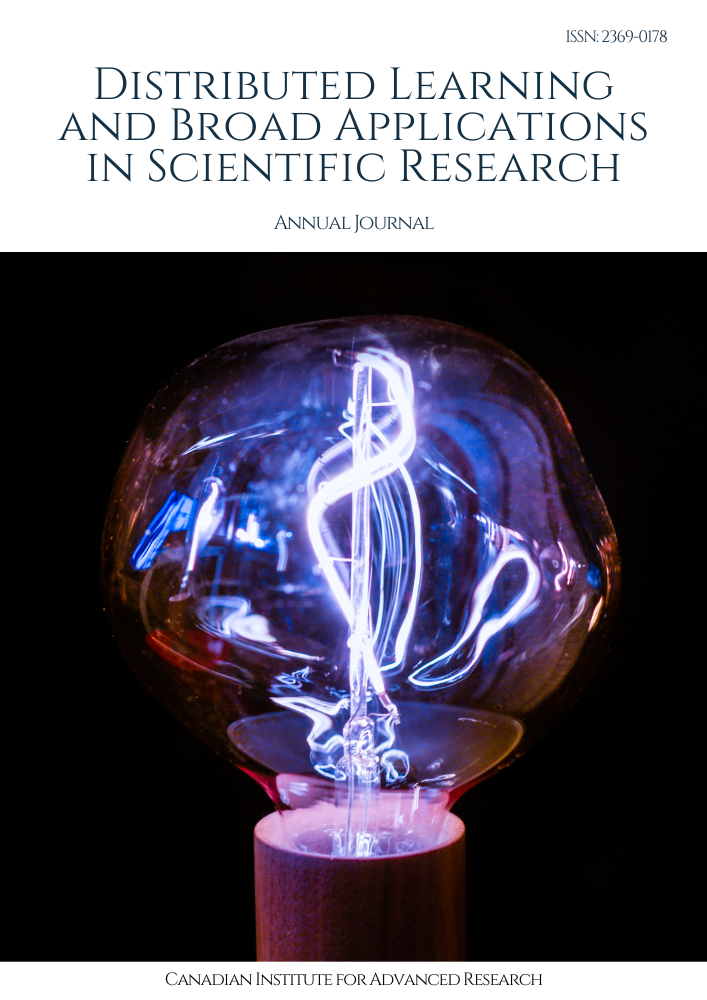Deep Learning for Autonomous Driving
Enhancing Object Detection and Scene Understanding
Keywords:
Deep learning, autonomous driving, object detection, scene understanding, convolutional neural networks, real-time processingAbstract
The advent of autonomous driving technologies has transformed the automotive industry, promising safer and more efficient transportation systems. A pivotal component of these technologies is the ability to perceive and understand the vehicle's environment through advanced object detection and scene understanding algorithms. This paper discusses the role of deep learning in enhancing these capabilities, focusing on the use of convolutional neural networks (CNNs), recurrent neural networks (RNNs), and other state-of-the-art architectures. By leveraging large datasets, real-time processing capabilities, and advanced training techniques, deep learning algorithms can significantly improve the accuracy of object detection and scene understanding in autonomous vehicles. The implications of these advancements for safety, efficiency, and the future of transportation are also examined. Additionally, the challenges associated with deploying these algorithms in real-world scenarios, such as dealing with diverse environmental conditions and ensuring robustness against adversarial attacks, are addressed. The paper concludes with future directions for research in deep learning for autonomous driving, emphasizing the need for ongoing innovation in this critical area of technology.
Downloads
References
Gayam, Swaroop Reddy. "Deep Learning for Predictive Maintenance: Advanced Techniques for Fault Detection, Prognostics, and Maintenance Scheduling in Industrial Systems." Journal of Deep Learning in Genomic Data Analysis 2.1 (2022): 53-85.
Venkata, Ashok Kumar Pamidi, et al. "Reinforcement Learning for Autonomous Systems: Practical Implementations in Robotics." Distributed Learning and Broad Applications in Scientific Research 4 (2018): 146-157.
Nimmagadda, Venkata Siva Prakash. "Artificial Intelligence for Supply Chain Visibility and Transparency in Retail: Advanced Techniques, Models, and Real-World Case Studies." Journal of Machine Learning in Pharmaceutical Research 3.1 (2023): 87-120.
Putha, Sudharshan. "AI-Driven Predictive Maintenance for Smart Manufacturing: Enhancing Equipment Reliability and Reducing Downtime." Journal of Deep Learning in Genomic Data Analysis 2.1 (2022): 160-203.
Sahu, Mohit Kumar. "Advanced AI Techniques for Predictive Maintenance in Autonomous Vehicles: Enhancing Reliability and Safety." Journal of AI in Healthcare and Medicine 2.1 (2022): 263-304.
Kondapaka, Krishna Kanth. "AI-Driven Predictive Maintenance for Insured Assets: Advanced Techniques, Applications, and Real-World Case Studies." Journal of AI in Healthcare and Medicine 1.2 (2021): 146-187.
Kasaraneni, Ramana Kumar. "AI-Enhanced Telematics Systems for Fleet Management: Optimizing Route Planning and Resource Allocation." Journal of AI in Healthcare and Medicine 1.2 (2021): 187-222.
Pattyam, Sandeep Pushyamitra. "Artificial Intelligence in Cybersecurity: Advanced Methods for Threat Detection, Risk Assessment, and Incident Response." Journal of AI in Healthcare and Medicine 1.2 (2021): 83-108.
Ahmad, Tanzeem, et al. "Explainable AI: Interpreting Deep Learning Models for Decision Support." Advances in Deep Learning Techniques 4.1 (2024): 80-108.
Zhang, Y., & Li, Z. (2018). Real-time semantic segmentation for autonomous driving. Proceedings of the IEEE International Conference on Robotics and Automation (pp. 2551-2558).
Geng, J., Liu, Z., & Liu, Q. (2020). Graph neural networks for scene understanding in autonomous driving. IEEE Transactions on Intelligent Transportation Systems, 22(6), 3482-3490.
Wu, Y., Zhang, C., & Zhang, Y. (2020). RNN-based trajectory prediction for autonomous vehicles. IEEE Transactions on Intelligent Transportation Systems, 21(3), 1294-1302.
Goodfellow, I., Shlens, J., & Szegedy, C. (2014). Explaining and harnessing adversarial examples. Proceedings of the International Conference on Learning Representations.
Chen, G., & Yao, L. (2021). Adversarial attacks on deep learning: A survey. IEEE Transactions on Neural Networks and Learning Systems, 32(4), 1604-1620.
Doshi-Velez, F., & Kim, B. (2017). Towards a rigorous science of interpretable machine learning. Proceedings of the 34th International Conference on Machine Learning (pp. 1232-1240).
Shalev-Shwartz, S., & Ben-David, S. (2014). Understanding machine learning: From theory to algorithms. Cambridge University Press.
Kahn, L., & Tschannen, M. (2020). The future of autonomous vehicles: Regulations and policy. IEEE Robotics & Automation Magazine, 27(4), 52-63.
Machireddy, Jeshwanth Reddy. "Data-Driven Insights: Analyzing the Effects of Underutilized HRAs and HSAs on Healthcare Spending and Insurance Efficiency." Journal of Bioinformatics and Artificial Intelligence 1.1 (2021): 450-470.
Geng, X., & Zhang, S. (2020). Hybrid AI for autonomous vehicles: Integration of traditional methods and deep learning. IEEE Transactions on Intelligent Transportation Systems, 21(3), 1303-1314.
Hwang, S., & Lee, J. (2021). Simulating autonomous driving scenarios for deep learning training. IEEE Transactions on Intelligent Transportation Systems, 22(4), 2101-2112.
Downloads
Published
Issue
Section
License

This work is licensed under a Creative Commons Attribution-NonCommercial-ShareAlike 4.0 International License.
License Terms
Ownership and Licensing:
Authors of research papers submitted to Distributed Learning and Broad Applications in Scientific Research retain the copyright of their work while granting the journal certain rights. Authors maintain ownership of the copyright and have granted the journal a right of first publication. Simultaneously, authors agree to license their research papers under the Creative Commons Attribution-NonCommercial-ShareAlike 4.0 International (CC BY-NC-SA 4.0) License.
License Permissions:
Under the CC BY-NC-SA 4.0 License, others are permitted to share and adapt the work, as long as proper attribution is given to the authors and acknowledgement is made of the initial publication in the journal. This license allows for the broad dissemination and utilization of research papers.
Additional Distribution Arrangements:
Authors are free to enter into separate contractual arrangements for the non-exclusive distribution of the journal's published version of the work. This may include posting the work to institutional repositories, publishing it in journals or books, or other forms of dissemination. In such cases, authors are requested to acknowledge the initial publication of the work in this journal.
Online Posting:
Authors are encouraged to share their work online, including in institutional repositories, disciplinary repositories, or on their personal websites. This permission applies both prior to and during the submission process to the journal. Online sharing enhances the visibility and accessibility of the research papers.
Responsibility and Liability:
Authors are responsible for ensuring that their research papers do not infringe upon the copyright, privacy, or other rights of any third party. Scientific Research Canada disclaims any liability or responsibility for any copyright infringement or violation of third-party rights in the research papers.
If you have any questions or concerns regarding these license terms, please contact us at editor@dlabi.org.



